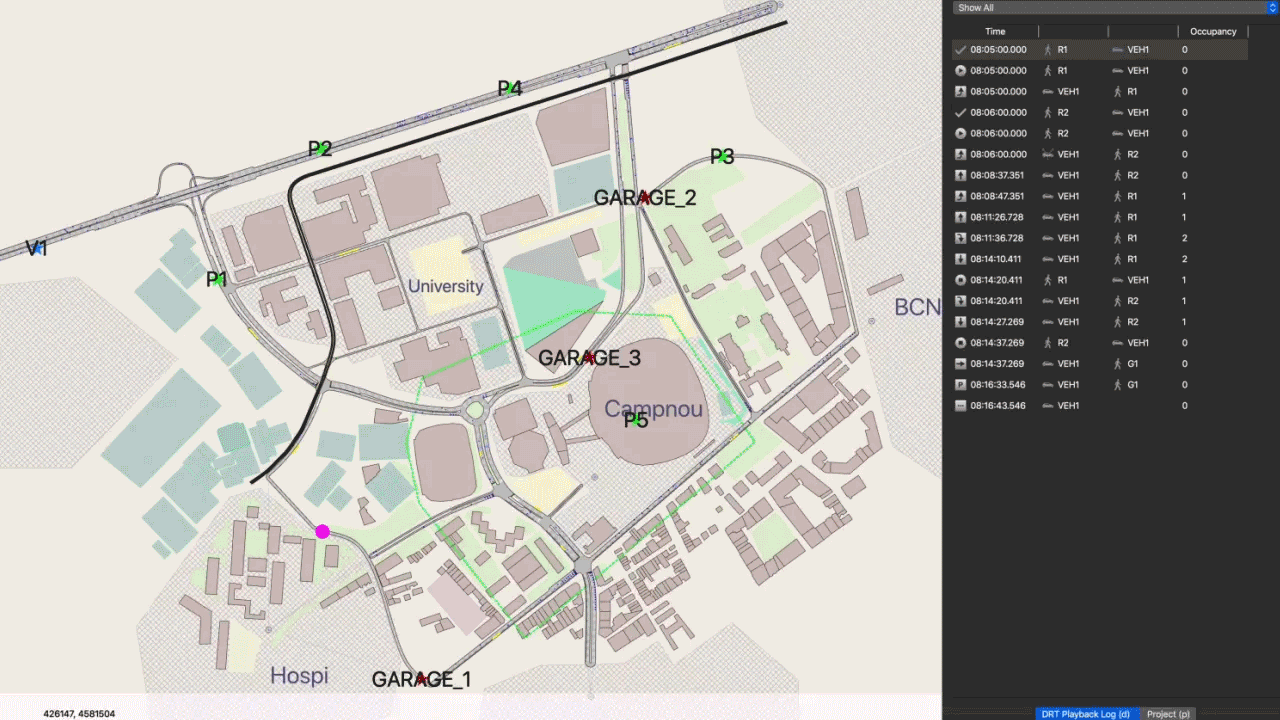- Solutions
- Innovation
- Software
Get Aimsun Next
Use Aimsun Next
About Aimsun Next
- About
Aimsun Ride Research Program
This program is aimed at researchers working on the development of fleet management algorithms for Mobility as a Service (MaaS) and emerging fleet management services.
We can offer you a testing platform for your code, which comprises the Research edition of Aimsun Next mobility modeling software, plus our special Aimsun Ride plugins for modeling mobility as a service.
How does it work?
You connect your algorithms through a TCP/IP interface to get the trip requests, the status of the vehicles in your fleet, and the status of the congestion in the network.
Based on these inputs, you send back instructions to your fleet. For example: vehicle K diverts to location X to pick up passenger A, and then goes to location Y to drop him off.
The platform simulates the execution of these instructions, updating the status of each vehicle in the fleet, showing their interaction with background traffic, and calculating your chosen key performance indicators such as the average waiting time for passengers or the average idling time for vehicles.
What does Aimsun provide?
- A stand-alone licence of Aimsun Next Research Edition and plugins
- 8 hours of technical support for Aimsun Next and Aimsun Ride plugins
- Bug-fixing free of charge for Aimsun Next and Aimsun Ride plugins
- Access to a repository of Aimsun-developed and research-community-sourced road network models
- Access to an Aimsun Ride Research Program repository of community-sourced fleet management algorithms
- Promotion of your research on the Aimsun website, in the newsletter, and on social media channels
Use cases
Are you are developing or improving algorithms, like adding the capability of sharing rides, or tuning the decision-making process for pairing requests?
Maybe you want to test how your algorithms will perform in a particular city or with a certain set of requests?
In any of the cases, our modeling platform can replace real life testing, using a virtual representation of the roads, background traffic, the vehicles in your service fleet, and of the trip requests, that is, the individual passengers that want to go from point A to point B at time T.







